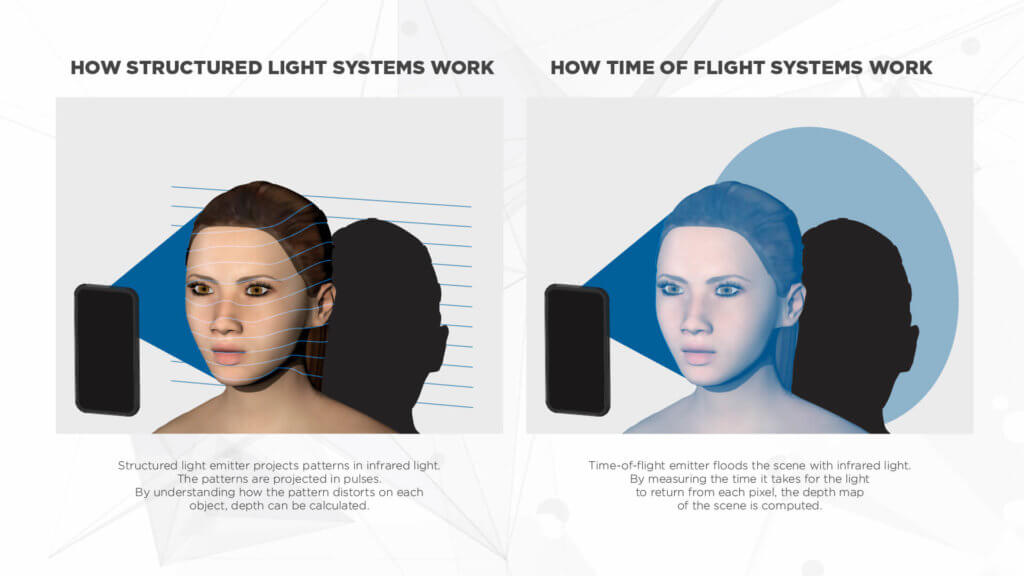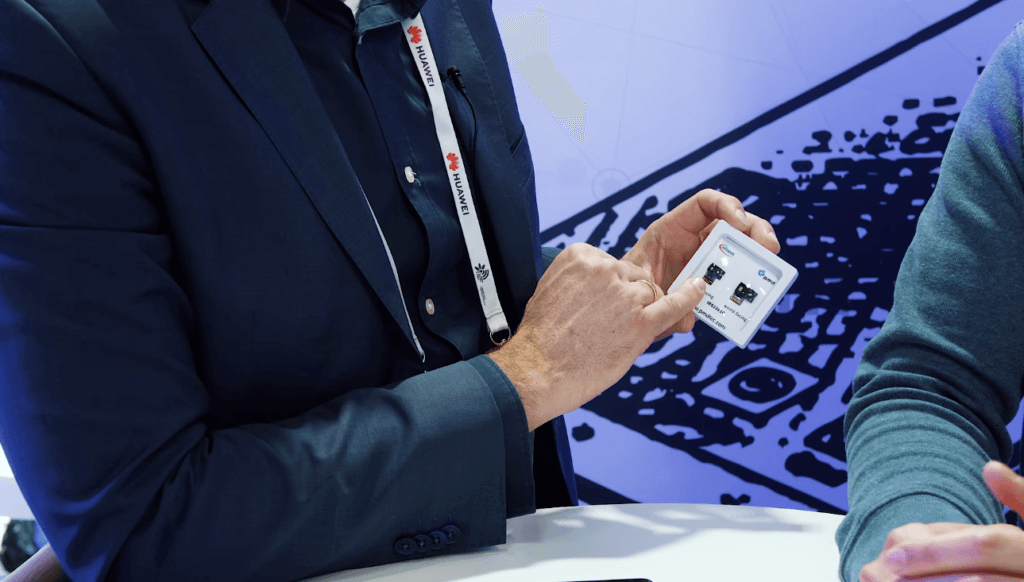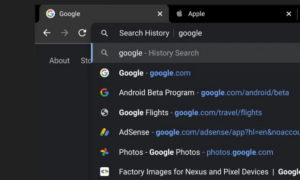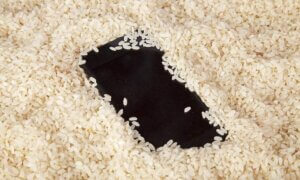ToF is not some kind of texting abbreviation millenials like to throw around. It stands for time of flight camera, a technology that we believe smartphone manufacturers will adopt sooner or later. At Mobile World Congress, we met Bernd Buxbaum, CEO of PMD Technologies, makers of the ToF sensor that enabled all of LG G8′ 3D “magical” features. He explained why ToF is better than structured light, Apple’s preferred depth-sensing tech.
The LG G8 ThinQ bases Air Motion, Vein ID, Face Unlock, Spotlight and other features on its 3D depth-sensing camera system. In other words, one problem with this hardware can turn the phone’s most attractive features in a nightmare.
How likely is that scenario? Is Apple’s solution – structured light – better than what LG used? To get our answers, we asked PMD Technologies what is, exactly, time of flight. “The camera transmits light particles and based on the reflection that gets back from the scene, we can measure the distance in every single pixel”, said Bernd Buxbaum.

ToF sensors flood the entire scene with light and calculate depth by the time it takes each photon to come back to the sensor. Structured light, on the other hand, entails a known pattern projected by the IF sensor. The way the pattern deforms is key to constructing a depth map.
Rumor is, Apple is considering using ToF sensors for 2020’s phones, too. But why would they give up on structured light? The time of flight sensors are smaller, cheaper and less of a hassle, says Buxbaum:
“It’s much much easier to calibrate the system and again, it’s more robust when it comes to sunlight”
The accuracy of the depth map is better with the time of flight camera, too, since it floods the entire scene, using all facial depth points. This makes it a top choice for face recognition applications, from unlocking your phone to payments, and portrait enhancements.
In LG G8 ThinQ’s case, PMD Technologies teamed up with FotoNation (Xperi) to offer a complete 3D face recognition solution. FaceSafe (as it is called in-house by Xperi) is the first commercially-available solution utilizing a time of flight sensor. It has a low false acceptance rate (FAR) and low single-digit false recognition rate (FRR), attention detection and high-performance anti-spoofing technologies that will protect the phone against print, video and 3D mask attacks. We saw the face recognition solution in the flesh at the Xperi booth and it was a seamless, speedy process.
On the portrait enhancement side, the LG G8 took advantage of the ToF sensor to add bokeh and more importantly, to relight the photo virtually, in real time, prior capture. The innovative feature came from FotoNation (Xperi) and is one of the things that most impressed us at MWC 2019 (read here more!)
“You can use the 3D sensor to integrate additional light sources to illuminate the scene virtually”
So far, phones from Vivo, Oppo and Honor have announced camera features based on this depth-sensing technology so the adoption rate is still small but on the rise. Yet, Bernd knows exactly where the ToF sensors are headed:
“In upcoming devices, from other manufacturers, our sensors will be in the back camera too […] for applications like augmented reality. The system is the same, the only thing that really changes is the illuminator so we use a little bit more optical power to measure to higher distances.”

As for the technology itself, next generation sensors need more resolution, while shrinking the pixels. In fact, PMD Technologies has already taken the next step in that direction: “We made an announcement today that we are launching a new chip product that has four times the resolution of the one on LG G8.”
“Pixels need to be shrinked, we need more resolution and sensors in the rear camera, as well”
Their partnerships aren’t limited to mobile OEMs, either. Bernd told us that the talked-about Byton car uses their hardware and teased more projects in the months to come. Just play the video above!
Follow TechTheLead on Google News to get the news first.




